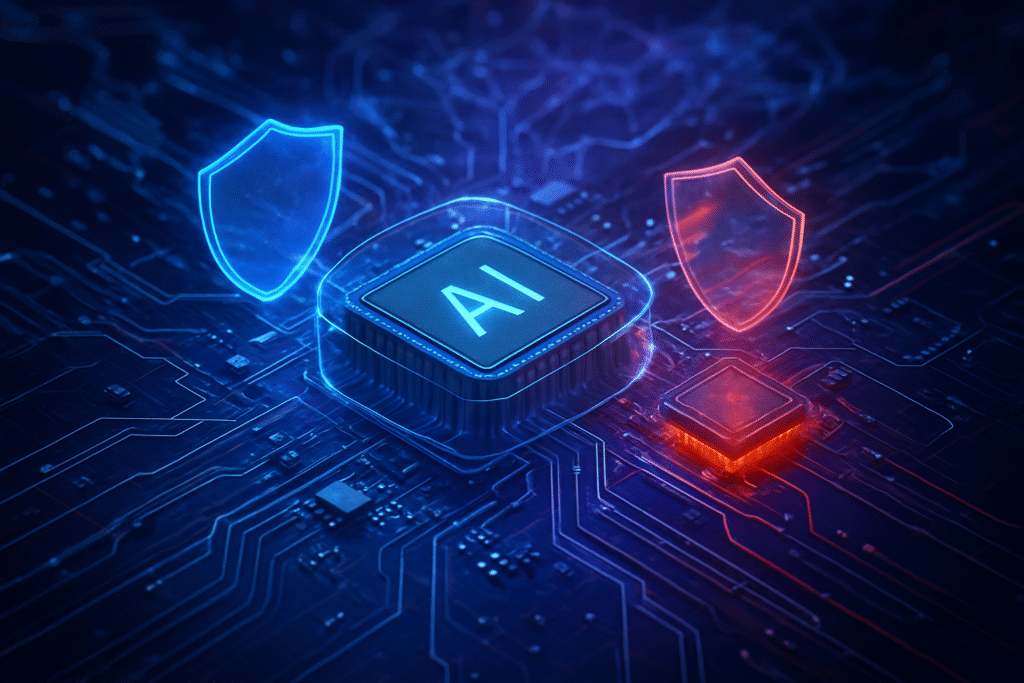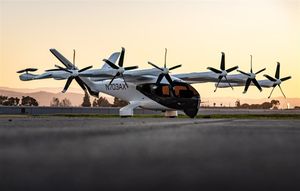
The burgeoning era of artificial intelligence, fueled by insatiable demand for processing power, is igniting a new frontier of legal warfare within the semiconductor industry. As companies race to develop the next generation of AI chips and infrastructure, patent disputes are escalating in frequency and financial stakes, threatening to disrupt innovation, reshape market leadership, and even impact global supply chains. These legal skirmishes, particularly evident in 2024 and 2025, are no longer confined to traditional chip manufacturing but are increasingly targeting the very core of AI hardware and its enabling technologies.
Recent high-profile cases, such as Xockets' lawsuit against NVIDIA (NASDAQ: NVDA) and Microsoft (NASDAQ: MSFT) over Data Processing Unit (DPU) technology crucial for generative AI, and ParTec AG's ongoing battle with NVIDIA regarding supercomputing architectures, underscore the immediate significance of these disputes. These actions seek to block the sale of essential AI components and demand billions in damages, casting a long shadow over the rapid advancements in AI. Beyond direct infringement claims, geopolitical tensions, exemplified by the Nexperia standoff, add another layer of complexity, demonstrating how intellectual property (IP) control is becoming a critical battleground for national technological sovereignty.
Unpacking the Technical Battlegrounds: DPUs, Supercomputing, and AI Accelerators
The current wave of semiconductor patent disputes delves deep into the foundational technologies powering modern AI. A prime example is the lawsuit filed by Xockets Inc., a Texas-based startup, in September 2024 against NVIDIA and Microsoft. Xockets alleges that both tech giants unlawfully utilized its "New Cloud Processor" and "New Cloud Fabric" technology, which it defines as Data Processing Unit (DPU) technology. This DPU technology is claimed to be integral to NVIDIA's latest Blackwell GPU-enabled AI computer systems and, by extension, to Microsoft's generative AI platforms that leverage these systems. Xockets is seeking not only substantial damages but also a court injunction to halt the sale of products infringing its patents, a move that could significantly impede the rollout of NVIDIA's critical AI hardware. This dispute highlights the increasing importance of specialized co-processors, like DPUs, in offloading data management and networking tasks from the main CPU and GPU, thereby boosting the efficiency of large-scale AI workloads.
Concurrently, German supercomputing firm ParTec AG has escalated its patent dispute with NVIDIA, filing its third lawsuit in Munich by August 2025. ParTec accuses NVIDIA of infringing its patented "dynamic Modular System Architecture (dMSA)" technology in NVIDIA's highly successful DGX AI supercomputers. The dMSA technology is critical for enabling CPUs, GPUs, and other processors to dynamically coordinate and share workloads, a necessity for the immense computational demands of complex AI calculations. ParTec's demand for NVIDIA to cease selling its DGX systems in 18 European countries could force NVIDIA to undertake costly redesigns or pay significant licensing fees, potentially reshaping the European AI hardware market. These cases illustrate a shift from general-purpose computing to highly specialized architectures optimized for AI, where IP ownership of these optimizations becomes paramount. Unlike previous eras focused on CPU or GPU design, the current disputes center on the intricate interplay of components and the software-defined hardware capabilities that unlock AI's full potential.
The settlement of Singular Computing LLC's lawsuit against Google (NASDAQ: GOOGL) in January 2024, though concluded, further underscores the technical and financial stakes. Singular Computing alleged that Google's Tensor Processing Units (TPUs), specialized AI accelerators, infringed on its patents related to Low-Precision, High Dynamic Range (LPHDR) processing systems. These systems are crucial for AI applications as they trade computational precision for efficiency, allowing for faster and less power-intensive AI inference and training. The lawsuit, which initially sought up to $7 billion in damages, highlighted how even seemingly subtle advancements in numerical processing within AI chips can become the subject of multi-billion-dollar legal battles. The initial reactions from the AI research community to such disputes often involve concerns about potential stifling of innovation, as companies might become more cautious in adopting new technologies for fear of litigation, or a greater emphasis on cross-licensing agreements to mitigate risk.
Competitive Implications and Market Realignments for AI Giants
These escalating patent disputes carry profound implications for AI companies, tech giants, and startups alike, potentially reshaping competitive landscapes and market positioning. Companies like NVIDIA, a dominant force in AI hardware with its GPUs and supercomputing platforms, face direct threats to their core product lines. Should Xockets or ParTec prevail, NVIDIA could be forced to redesign its Blackwell GPUs or DGX systems for specific markets, incur substantial licensing fees, or even face sales injunctions. Such outcomes would not only impact NVIDIA's revenue and profitability but also slow down the deployment of critical AI infrastructure globally, affecting countless AI labs and businesses relying on their technology. Competitors, particularly those developing alternative AI accelerators or DPU technologies, could seize such opportunities to gain market share or leverage their own IP portfolios.
For tech giants like Microsoft and Google, who are heavily invested in generative AI and cloud-based AI services, these disputes present a dual challenge. As users and deployers of advanced AI hardware, they are indirectly exposed to the risks associated with their suppliers' IP battles. Microsoft, for instance, is named in the Xockets lawsuit due to its use of NVIDIA's AI systems. Simultaneously, as developers of their own custom AI chips (like Google's TPUs), they must meticulously navigate the patent landscape to avoid infringement. The Singular Computing settlement, even though it concluded, serves as a stark reminder of the immense financial liabilities associated with IP in custom AI silicon. Startups in the AI hardware space, while potentially holding valuable IP, also face the daunting prospect of challenging established players, as seen with Xockets. The sheer cost and complexity of litigation can be prohibitive, even for those with strong claims.
The broader competitive implication is a potential shift in strategic advantages. Companies with robust and strategically acquired patent portfolios, or those adept at navigating complex licensing agreements, may find themselves in a stronger market position. This could lead to increased M&A activity focused on acquiring critical IP, or more aggressive patenting strategies to create defensive portfolios. The disputes could also disrupt existing product roadmaps, forcing companies to divert resources from R&D into legal defense or product redesigns. Ultimately, the outcomes of these legal battles will influence which companies can innovate most freely and quickly in the AI hardware space, thereby impacting their ability to deliver cutting-edge AI products and services to market.
Broader Significance: IP as the New Geopolitical Battleground
The proliferation of semiconductor patent disputes is more than just a series of legal skirmishes; it's a critical indicator of how intellectual property has become a central battleground in the broader AI landscape. These disputes highlight the immense economic and strategic value embedded in every layer of the AI stack, from foundational chip architectures to specialized processing units and even new AI-driven form factors. They fit into a global trend where technological leadership, particularly in AI, is increasingly tied to the control and protection of core IP. The current environment mirrors historical periods of intense innovation, such as the early days of the internet or the mobile revolution, where patent wars defined market leaders and technological trajectories.
Beyond traditional infringement claims, these disputes are increasingly intertwined with geopolitical considerations. The Nexperia standoff, unfolding in late 2025, is a stark illustration. While not a direct patent infringement case, it involves the Dutch government seizing temporary control of Nexperia, a crucial supplier of foundational semiconductor components, due to alleged "improper transfer" of production capacity and IP to its Chinese parent company, Wingtech Technology. This move, met with retaliatory export blocks from China, reveals extreme vulnerabilities in global supply chains for components vital to sectors like automotive AI. It underscores how national security and technological sovereignty concerns are now driving interventions in IP control, impacting the availability of "unglamorous but vital" chips for AI-driven systems. This situation raises potential concerns about market fragmentation, where IP laws and government interventions could lead to different technological standards or product availability across regions, hindering global AI collaboration and development.
Comparisons to previous AI milestones reveal a new intensity. While earlier AI advancements focused on algorithmic breakthroughs, the current era is defined by the hardware infrastructure that scales these algorithms. The patent battles over DPUs, AI supercomputer architectures, and specialized accelerators are direct consequences of this hardware-centric shift. They signal that the "picks and shovels" of the AI gold rush—the semiconductors—are now as hotly contested as the algorithms themselves. The financial stakes, with billions of dollars in damages sought or awarded, reflect the perceived future value of these technologies. This broader significance means that the outcomes of these legal battles will not only shape corporate fortunes but also influence national competitiveness in the global race for AI dominance.
The Road Ahead: Anticipated Developments and Challenges
Looking ahead, the landscape of semiconductor patent disputes in the AI era is expected to become even more complex and dynamic. In the near term, we can anticipate a continued surge in litigation as more AI-specific hardware innovations reach maturity and market adoption. Expert predictions suggest an increase in "patent troll" activity from Non-Practicing Entities (NPEs) who acquire broad patent portfolios and target successful AI hardware manufacturers, adding another layer of cost and risk. We will likely see further disputes over novel AI chip designs, neuromorphic computing architectures, and specialized memory solutions optimized for AI workloads. The focus will also broaden beyond core processing units to include interconnect technologies, power management, and cooling solutions, all of which are critical for high-performance AI systems.
Long-term developments will likely involve more strategic cross-licensing agreements among major players, as companies seek to mitigate the risks of widespread litigation. There might also be a push for international harmonization of patent laws or the establishment of specialized courts or arbitration bodies to handle the intricacies of AI-related IP. Potential applications and use cases on the horizon, such as ubiquitous edge AI, autonomous systems, and advanced robotics, will rely heavily on these contested semiconductor technologies, meaning the outcomes of current disputes could dictate which companies lead in these emerging fields. Challenges that need to be addressed include the enormous financial burden of litigation, which can stifle innovation, and the potential for patent thickets to slow down technological progress by creating barriers to entry for smaller innovators.
Experts predict that the sheer volume and complexity of AI-related patents will necessitate new approaches to IP management and enforcement. There's a growing consensus that the industry needs to find a balance between protecting inventors' rights and fostering an environment conducive to rapid innovation. What happens next could involve more collaborative R&D efforts to share IP, or conversely, a hardening of stances as companies guard their competitive advantages fiercely. The legal and technological communities will need to adapt quickly to define clear boundaries and ownership in an area where hardware and software are increasingly intertwined, and where the definition of an "invention" in AI is constantly evolving.
A Defining Moment in AI's Hardware Evolution
The current wave of semiconductor patent disputes represents a defining moment in the evolution of artificial intelligence. It underscores that while algorithms and data are crucial, the physical hardware that underpins and accelerates AI is equally, if not more, critical to its advancement and commercialization. The sheer volume and financial scale of these legal battles, particularly those involving DPUs, AI supercomputers, and specialized accelerators, highlight the immense economic value and strategic importance now attached to every facet of AI hardware innovation. This period is characterized by aggressive IP protection, where companies are fiercely defending their technological breakthroughs against rivals and non-practicing entities.
The key takeaways from this escalating conflict are clear: intellectual property in semiconductors is now a primary battleground for AI leadership; the stakes are multi-billion-dollar lawsuits and potential sales injunctions; and the disputes are not only technical but increasingly geopolitical. The significance of this development in AI history cannot be overstated; it marks a transition from a phase primarily focused on software and algorithmic breakthroughs to one where hardware innovation and its legal protection are equally paramount. These battles will shape which companies emerge as dominant forces in the AI era, influencing everything from the cost of AI services to the pace of technological progress.
In the coming weeks and months, the tech world should watch closely the progression of cases like Xockets vs. NVIDIA/Microsoft and ParTec vs. NVIDIA. The rulings in these and similar cases will set precedents for IP enforcement in AI hardware, potentially leading to new licensing models, strategic partnerships, or even industry consolidation. Furthermore, the geopolitical dimensions of IP control, as seen in the Nexperia situation, will continue to be a critical factor, impacting global supply chain resilience and national technological independence. How the industry navigates these complex legal and strategic challenges will ultimately determine the trajectory and accessibility of future AI innovations.
This content is intended for informational purposes only and represents analysis of current AI developments.
TokenRing AI delivers enterprise-grade solutions for multi-agent AI workflow orchestration, AI-powered development tools, and seamless remote collaboration platforms.
For more information, visit https://www.tokenring.ai/.





